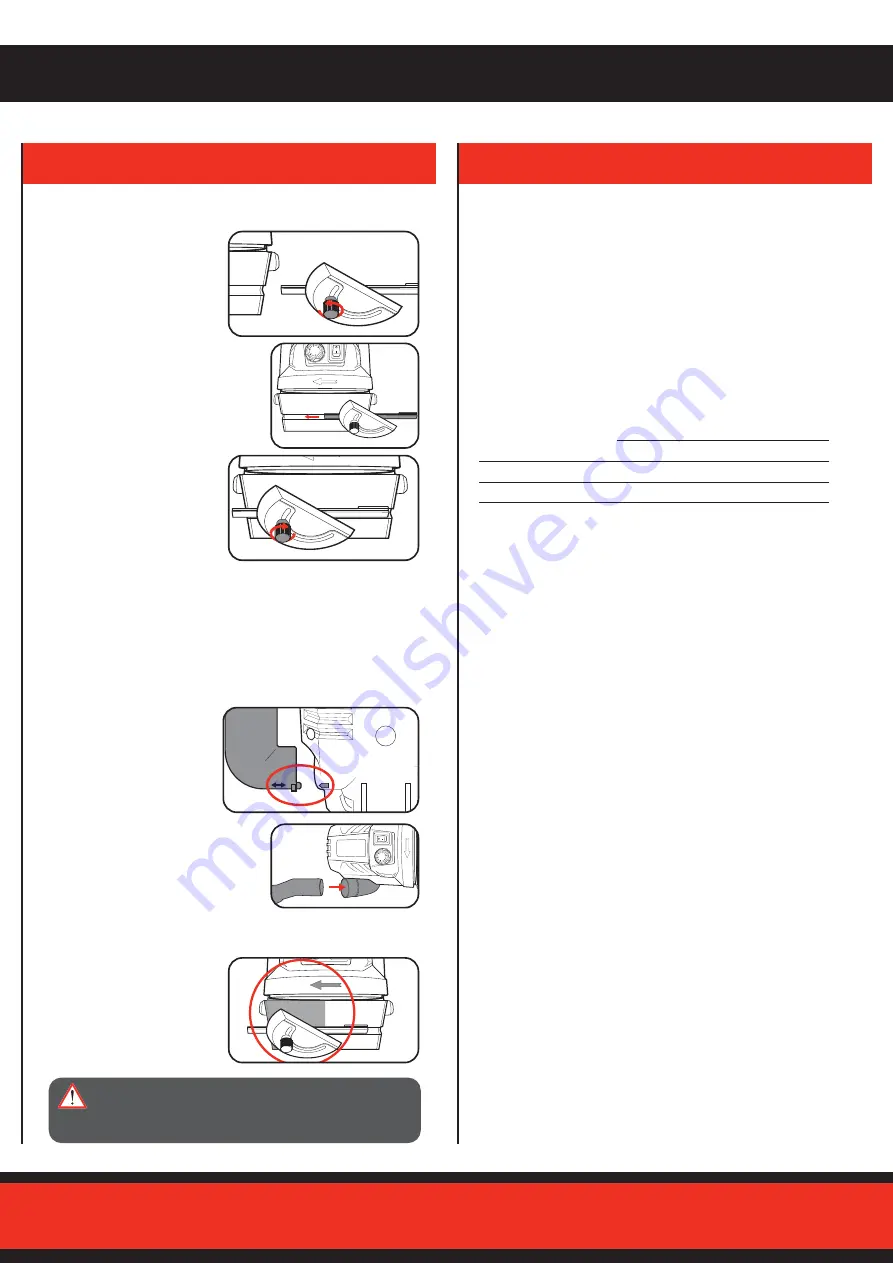
Installing The Mitre Fence
1. Loosen the fence adjustor
screw.
2. Slide the fence rail into the channel on
the tilt table.
3. Tighten the adjustor screw to
lock it in place.
Dust Extraction
A vacuum hose or dust extractor can be fitted to the dust extraction
port to help keep your work area clean while you’re sanding.
1. Align the arrow on the dust
extraction adaptor with the
arrow marking on the sander.
2. Insert the dust extraction
adaptor and turn it clockwise
to lock it in place.
3. A vacuum hose can now be fitted to
the other end of the adaptor to remove
sanding dust and debris as you work.
4. To remove the adaptor, rotate it in the port until the arrow markings
align, then pull it out of the slot.
Note:
The saw dust will travel
according to the direction of
the wheel rotation. For efficient
dust extraction, position the
workpiece on the left of the
sanding disc.
WARNING!
DUST EXTRACTION SHOULD NOT BE
USED DURING METAL SANDING TO PREVENT HOT
METAL FRAGMENTS FROM ENTERING THE VACUUM
CLEANER OR DUST EXTRACTION SYSTEM.
Sandpaper Selection
Selecting the correct grit of sandpaper is an important step in
achieving optimum results. Coarse grit will remove the most material.
Finer grit will produce a smoother finish. The condition of the
workpiece will determine the grit of the sandpaper to be used. The
higher the grit number, the finer the grade of sandpaper.
If the surface is rough, start with a coarse grit and sand until the
surface is uniform. Medium grit may then be used to remove
scratches left by the coarser grit. Finer grit is then used to finish the
surface. Always continue sanding with each grade of sandpaper until
the surface is uniform.
MATERIAL
APPROPRIATE GRIT
Coarse Sanding
Fine Sanding
Soft Timbers
60
240
Hardwoods
60
180
Note:
If intermediate sanding is required, choose a grit rating
between coarse and fine. The above table is intended as a guide
only. To ensure a satisfactory result, test on a scrap piece of material
to ensure the grit of sandpaper chosen is suitable for the desired
finish.
Replace the sand paper when it becomes worn.
2. FITTING SANDPAPER


























